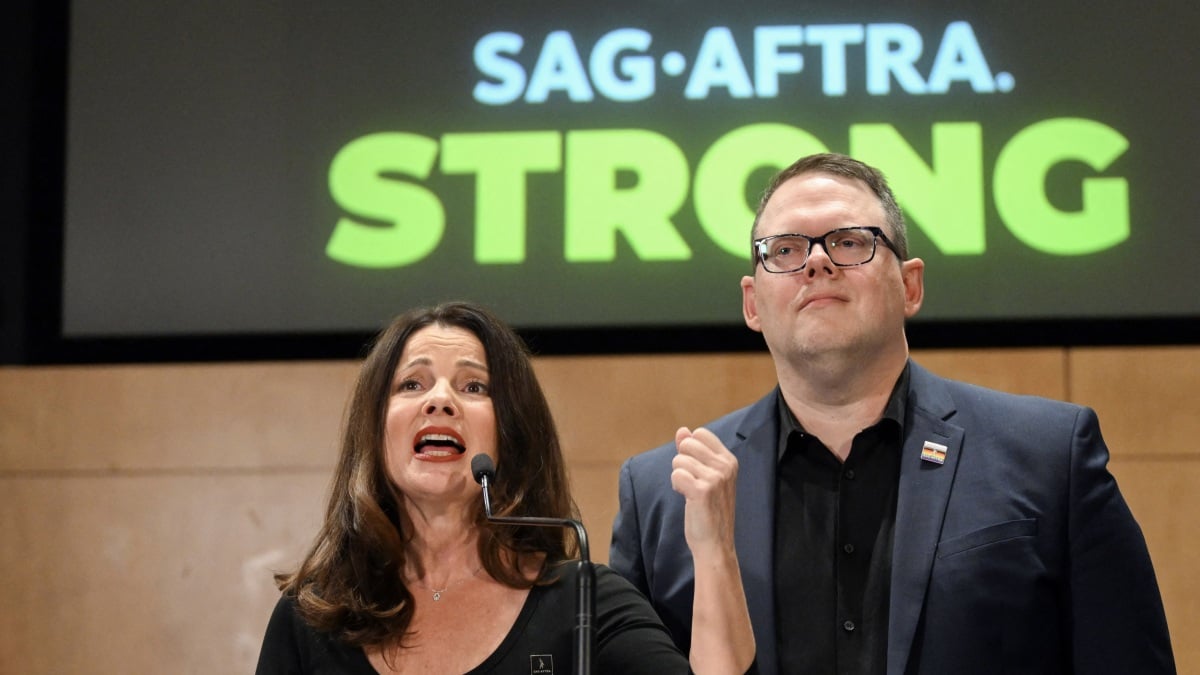Although the strike by the Screen Actors Guild-American Federation of Television and Radio Artists (SAG-AFTRA) has concluded, actors are facing uncertainties related to artificial intelligence regulations in the new contract with the Alliance of Motion Picture and Television Producers.
Currently, SAG-AFTRA members are in the process of voting to approve the new agreement, with the deadline set for December 5. The union leadership has released an 18-page document outlining the contract’s provisions, particularly focusing on safeguards concerning artificial intelligence. However, some members find these safeguards vague and insufficient to provide a sense of security.
Sam Altman’s dismissal as the CEO of OpenAI has also made headlines, adding to the ongoing discussions surrounding artificial intelligence.
What is the stance of the innovative SAG-AFTRA agreement on AI?
The initial SAG-AFTRA contract acknowledges the inevitability of AI’s influence. Hollywood studios have already developed brain scans of historical actors, prompting SAG-AFTRA to address and regulate practices like body scans during their 118-day strike.
The agreement introduces two categories of digital replicas that studios can generate of performers: Employment-Based Digital Replicas (EBDRs) and Independently-Created Digital Replicas (ICDRs). While ICDRs are crafted from existing material without the actor’s direct involvement, EBDRs involve the real participation of performers in specific projects. Payment for the production and utilization of these replicas varies based on the type and whether the actors fall under Schedule F, where they receive a lump sum payment.
The consent of the performer is essential for both EBDRs and ICDRs. The agreement specifies that this consent remains valid even after the artist’s passing unless stated otherwise. However, there are exceptions to the acceptance rules for both types of replicas. For instance, if the visual or audio content closely aligns with the original script, performance, or recording, as determined by the studios, the use of an EBDR may not necessitate consent. Similarly, for projects protected under the First Amendment, such as academic or satirical works, permission may not be required for using ICDRs.
Furthermore, the contract addresses Synthetic Performers created by Generative AI, requiring producers to obtain the actor’s approval if a human actor’s name is associated with the Synthetic Performer, especially if it possesses identifiable facial features.
What concerns do performers have regarding these AI applications?
Several union members, including former SAG-AFTRA board member Justine Bateman, have expressed apprehensions regarding the contract’s language. Bateman highlighted concerns about the lack of compensation for Schedule F actors for the use of their EBDRs in sequels and the absence of a minimum wage for ICDRs, leaving actors to negotiate their pay terms. The vague exemptions for consent requirements, allowing studios to determine what constitutes significant alterations, have also raised alarms. Additionally, the contract does not mandate studios to update or modify footage, even if a replica is used without consent, limiting actors’ recourse to financial compensation only.
President of SAG-AFTRA, Fran Drescher, defended the agreement against critics, labeling them as “naysayers” and “contrarians.” While acknowledging Bateman’s cautious approach towards AI, the lead negotiator of the council, Duncan Crabtree-Ireland, emphasized that the AI provisions were a significant achievement within the constraints of the 118-day strike.
However, the criticisms of the proposed agreement extend beyond Bateman, with concerns raised about the limited time available for members to review the entire contract before the ratification vote. The potential implications of studios resurrecting deceased performers on screen without consent have also sparked unease among members.
As the acceptance of the contract looms, actors are contemplating the implications of potentially being replaced by artificial performers. The contract’s provisions regarding artificial performers have raised questions about the employment landscape and the potential displacement of human actors by non-union digital counterparts, prompting broader discussions about the impact of AI in various industries beyond the entertainment sector.






